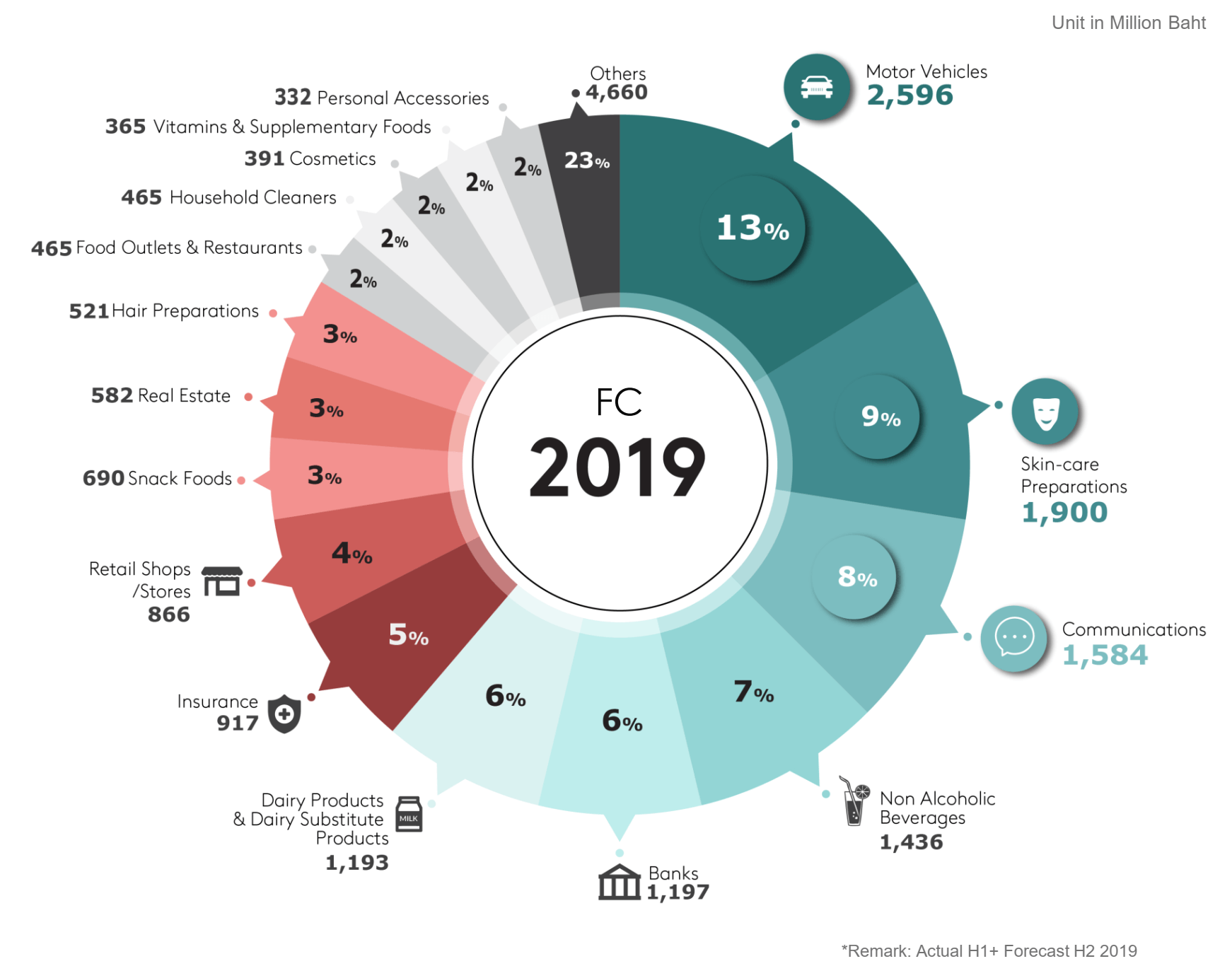How Tariffs Are Impacting Big Tech Advertising Spending

Table of Contents
Increased Costs of Goods and Services
Tariffs directly impact the bottom line of Big Tech companies, forcing them to re-evaluate their advertising spending. This cost increase manifests in two primary ways: rising input prices and supply chain disruptions.
Rising Input Prices
Tariffs on imported components – essential parts like microchips, displays, and rare earth minerals – significantly increase the cost of producing tech devices. This directly impacts profit margins, leaving less money available for marketing and advertising.
- Higher manufacturing costs necessitate price increases for consumers: To maintain profitability, tech companies often pass these increased costs onto consumers through higher prices for smartphones, laptops, and other electronics.
- Reduced consumer spending impacts overall revenue for tech companies: Higher prices lead to decreased consumer demand, reducing overall sales and revenue for tech giants.
- Less revenue leads to tighter marketing budgets and potentially fewer advertising campaigns: With less revenue coming in, Big Tech companies are forced to cut costs, and advertising is often one of the first areas to be affected. This can translate to fewer ad campaigns, reduced ad spending per campaign, or a complete halt on certain marketing initiatives.
Supply Chain Disruptions
Tariffs don't just increase the cost of goods; they also disrupt the smooth flow of global supply chains. This uncertainty further impacts production and, consequently, advertising strategies.
- Delays in receiving components can halt production and marketing timelines: Delays in obtaining essential components can cause production bottlenecks, pushing back product launches and disrupting carefully planned advertising campaigns.
- Uncertainty around future tariff changes makes long-term advertising planning difficult: The unpredictable nature of tariff policies makes it challenging for Big Tech companies to plan long-term advertising strategies. They may hesitate to commit significant resources to campaigns with uncertain future outcomes.
- Companies may adopt a wait-and-see approach, reducing immediate advertising spending: In response to this uncertainty, many companies adopt a more conservative approach, reducing immediate advertising spending until the situation stabilizes.
Impact on Digital Advertising Platforms
The ripple effects of tariffs extend to the digital advertising platforms themselves, impacting both Big Tech companies and their advertisers.
Reduced Ad Revenue
Tariffs that impact consumer spending directly influence the revenue generated by digital advertising platforms. Reduced consumer spending translates to decreased online activity and lower ad impressions.
- Fewer consumer purchases mean less online activity and lower ad impressions: When consumers are spending less, they are less likely to be browsing online or engaging with digital content, reducing the effectiveness of online advertising.
- Reduced advertiser confidence leads to decreased ad spending across the board: With economic uncertainty, advertisers become more cautious, reducing their overall ad spending, impacting the revenue of Big Tech platforms.
- Big Tech platforms may see a decline in overall advertising revenue: This decrease in advertiser confidence and online activity results in lower overall advertising revenue for platforms like Google Ads and Facebook Ads.
Changes in Advertising Strategies
Faced with reduced budgets, Big Tech companies are adapting their advertising strategies to maximize their return on investment (ROI).
- Increased emphasis on organic reach and content marketing: To reduce reliance on paid advertising, companies are focusing on organic strategies like search engine optimization (SEO) and content marketing to improve brand visibility.
- Optimization of ad campaigns for maximum ROI with reduced budgets: Existing ad campaigns are being meticulously optimized to ensure maximum impact with limited budgets. This includes refining targeting, A/B testing, and utilizing data analytics to improve performance.
- Prioritization of targeted advertising to maximize impact within limited resources: Companies are concentrating their resources on highly targeted advertising campaigns focused on specific demographics or customer segments to achieve the greatest possible return on investment.
Geopolitical Implications and Market Diversification
The impact of tariffs extends beyond financial considerations, forcing Big Tech to re-evaluate their global strategies.
Shifting Advertising Focus
Tariffs can force a shift in advertising focus towards regions less affected by trade wars.
- Increased investment in emerging markets less impacted by tariffs: Big Tech companies might invest more heavily in advertising campaigns in regions with less trade disruption, focusing on market expansion in these areas.
- Diversification of advertising strategies across different geographical regions: Companies develop more nuanced and region-specific marketing strategies, adapting their messages and channels to resonate with local audiences in different parts of the world.
- Re-evaluation of global market expansion plans in light of tariff implications: Companies are likely to reassess their global expansion strategies to prioritize markets less vulnerable to trade disputes.
Lobbying and Political Influence
Big Tech companies are actively engaging in lobbying efforts to influence tariff policies.
- Increased engagement with government agencies and policymakers: Tech companies are increasing their interactions with government agencies and policymakers to advocate for their interests and influence tariff decisions.
- Collaboration with industry associations to advocate for reduced tariffs: They actively collaborate with industry associations to present a united front and lobby for reduced tariffs or fairer trade practices.
- Public relations campaigns to highlight the negative economic effects of tariffs: Companies launch PR campaigns to inform the public about the negative consequences of tariffs on the economy and businesses, hoping to influence public opinion and government policy.
Conclusion
The impact of tariffs on Big Tech advertising spending is multifaceted, affecting production costs, digital ad platforms, and global strategies. Increased costs, supply chain disruptions, and reduced consumer spending all contribute to tighter budgets and necessitate strategic shifts in marketing approaches. To navigate this complex landscape, Big Tech companies are adapting by focusing on cost-effectiveness, market diversification, and political influence. Understanding how tariffs are impacting Big Tech advertising spending is crucial for both tech companies and those working within the advertising industry. Staying informed about tariff developments and their implications on the global economy is essential for effective long-term planning and strategy development. By closely monitoring these evolving dynamics, businesses can proactively adapt to the challenges and capitalize on new opportunities within this changing advertising landscape.

Featured Posts
-
 Manchester Uniteds Pursuit Of Osimhen A Difficult Challenge
Apr 26, 2025
Manchester Uniteds Pursuit Of Osimhen A Difficult Challenge
Apr 26, 2025 -
 General Sale Ticket Prices For Kendrick Lamar At Hampden Cause Outcry
Apr 26, 2025
General Sale Ticket Prices For Kendrick Lamar At Hampden Cause Outcry
Apr 26, 2025 -
 Federal Agency Survey Targets Jewish Employees At Columbia And Barnard
Apr 26, 2025
Federal Agency Survey Targets Jewish Employees At Columbia And Barnard
Apr 26, 2025 -
 Osimhen To Man United Financial Hurdles And Transfer Implications
Apr 26, 2025
Osimhen To Man United Financial Hurdles And Transfer Implications
Apr 26, 2025 -
 Mission Impossible Dead Reckoning Teaser Ethan Hunts Thrilling Return
Apr 26, 2025
Mission Impossible Dead Reckoning Teaser Ethan Hunts Thrilling Return
Apr 26, 2025
